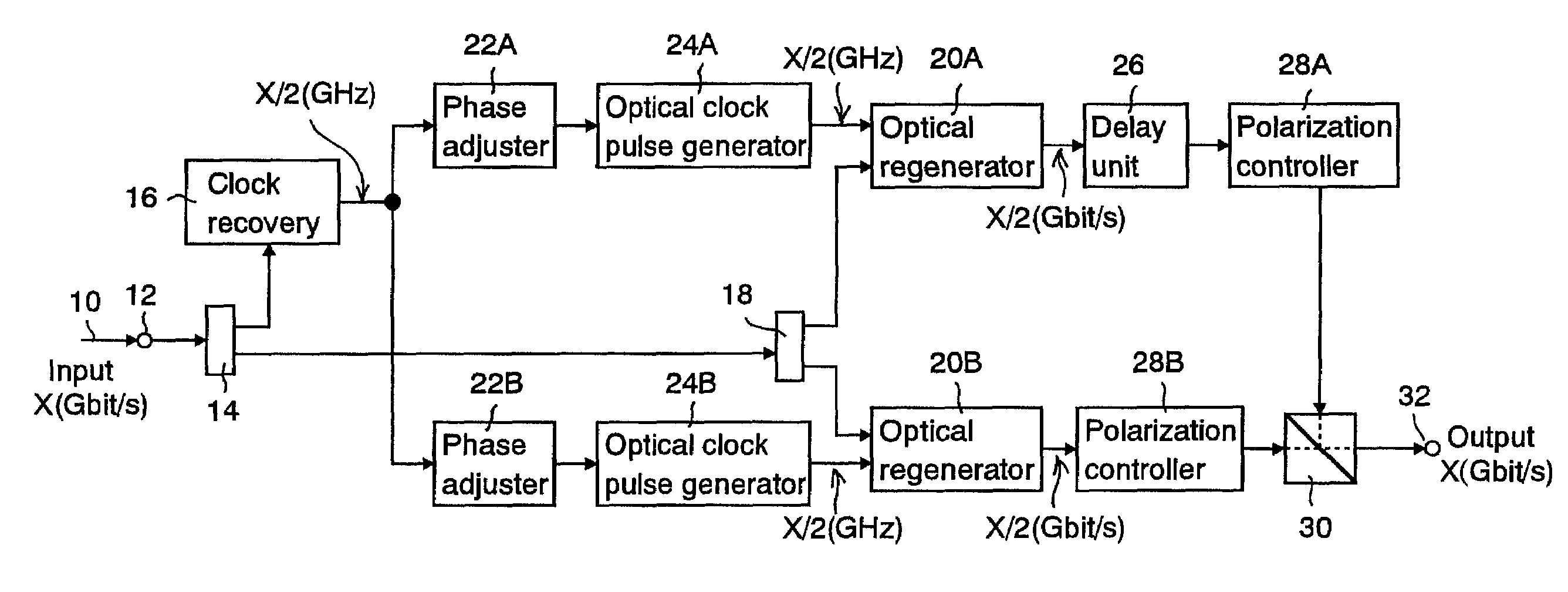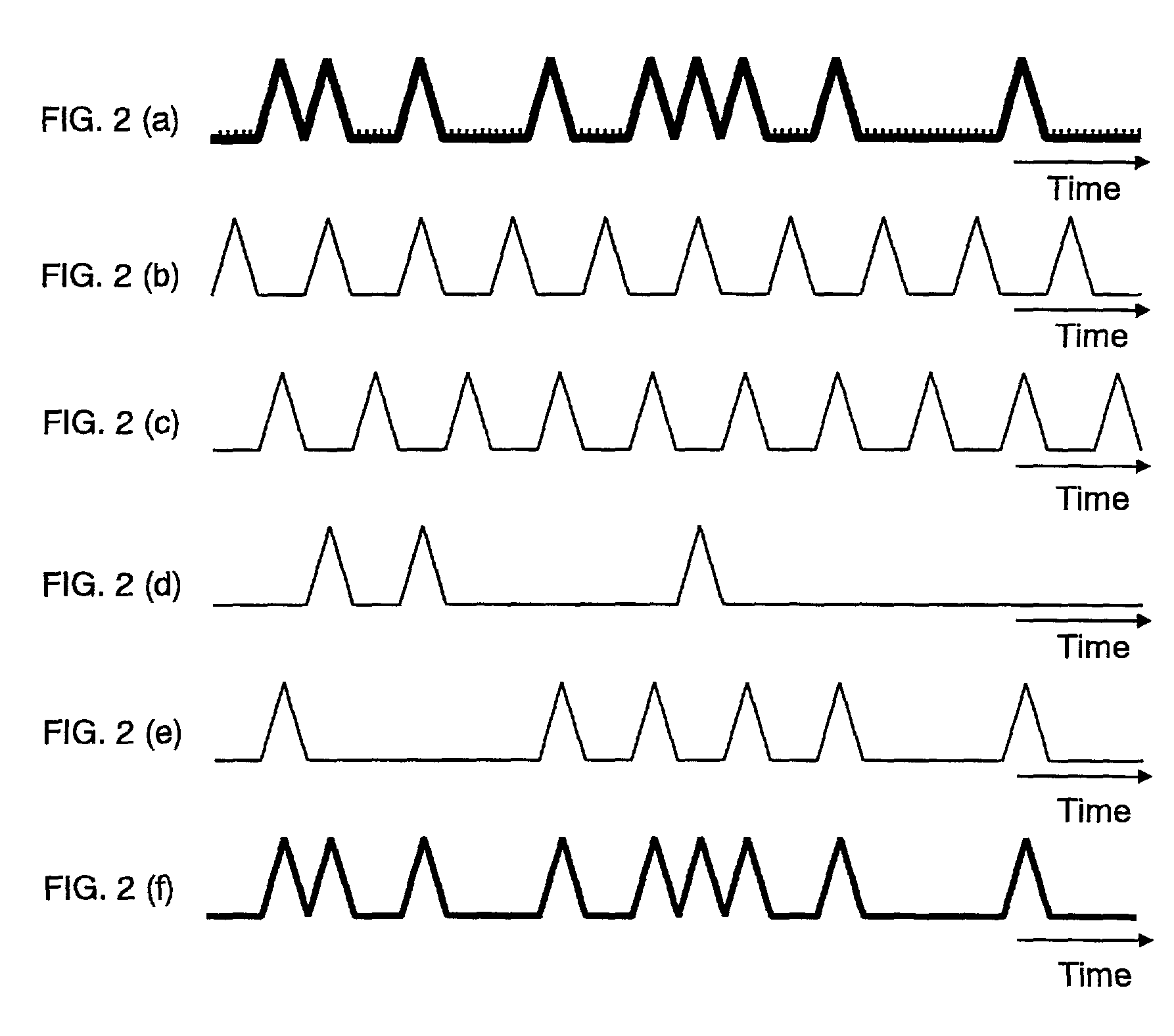Optical signal regenerator
a technology of optical signal and regenerator, which is applied in the direction of multiplex communication, pulse technique, instruments, etc., can solve the problems of inability to gain sufficient pulse extinction ratio of conventional optical pulse multiplexers, and difficulty in stably generating high-speed optical clocks not only in technical aspects but also in terms of production costs
- Summary
- Abstract
- Description
- Claims
- Application Information
AI Technical Summary
Benefits of technology
Problems solved by technology
Method used
Image
Examples
Embodiment Construction
[0014]Embodiments of the invention are explained below in detail with reference to the drawings.
[0015]FIG. 1 shows a schematic block diagram of a first embodiment according to the invention. FIGS. 2(a)–(f) respectively shows a waveform of each part.
[0016]An optical pulse of X (Gbit / s) signal 10 enters an input terminal 12. FIG. 2(a) shows a waveform example of the optical pulse signal 10. For example, X is set to 40. An optical splitter 14 applies about 1 / 10 of the optical power of the optical pulse signal 10 from the input terminal 12 to a clock recovery circuit 16 and the rest to an optical splitter 18. The optical splitter 18 splits the input light into half and applies one portion to an optical regenerator 20A and the other to an optical regenerator 20B.
[0017]The clock recovery circuit 16 regenerates an electric clock signal of X / 2 (GHz) out of the optical pulse from the optical splitter 14. Phase adjusters (delay circuits) 22A and 22B adjust phase of the electric clock signal f...
PUM
| Property | Measurement | Unit |
|---|---|---|
| frequency | aaaaa | aaaaa |
| optical | aaaaa | aaaaa |
| frequencies | aaaaa | aaaaa |
Abstract
Description
Claims
Application Information
 Login to View More
Login to View More - R&D
- Intellectual Property
- Life Sciences
- Materials
- Tech Scout
- Unparalleled Data Quality
- Higher Quality Content
- 60% Fewer Hallucinations
Browse by: Latest US Patents, China's latest patents, Technical Efficacy Thesaurus, Application Domain, Technology Topic, Popular Technical Reports.
© 2025 PatSnap. All rights reserved.Legal|Privacy policy|Modern Slavery Act Transparency Statement|Sitemap|About US| Contact US: help@patsnap.com



